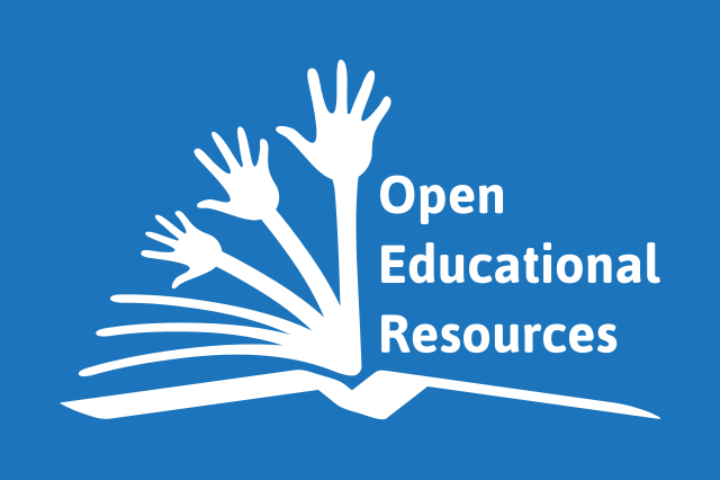What are „educational resources“?
Educational resources are those media / materials / tools that are used for planning, implementation, evaluation of teaching and learning:
- lecture videos, scripts
- digital or printed textbooks
- lectures, part of lectures, presentations
- course materials for learners and / or teachers
- courses - provided via an OER repository or available „ready to use“ in a course portal, with or without accompanying materials for teaching
- as a prepared online course (example) or as a lecture script
- textbooks, videos, idea sketches, instructions, worksheets, graphics, photos, simulations, project reports, question pools …
- tools

What does „openness“ mean and how can it be achieved?
Openness primarily refers to legal and technological facilitation of subsequent use and further development by third parties - independent of digital or physical characteristics:
Legal aspects of openness: Almost every media product - unless expressly marked otherwise - is protected by copyright or ancillary copyrights and therefore cannot be used, processed, and distributed without consultation.
This also applies to teaching/learning materials and arrangements as soon as they are used beyond the limiting provisions for science and teaching (Sec. 60 a-f UrhG (Act on Copyright and Related Rights)) as they are usually outside the rules of scientific publication practice (citation law, peer review, independence)
Open licenses (Creative Commons) allow sharing / participation - beyond Sec. 60a UrhG: The legal framework for the materials made available is visibly attached to the work as a license and grants subsequent users certain rights.
Open Educational Resources require rights to process, modify, as well as publish without spatial or temporal restrictions. The OER gold standard is: CC0, CC-BY, CC-BY-SA. Creative Commons refer to copyright and make no statement about the rights of third parties (personal rights, GDPR).
Spatial aspects: by choosing a storage location (OER repository) that is accessible to all interested parties without restrictions and can be found freely.
Technology-related aspects: Findability is ideally ensured and narrowed down beyond a Google search through the use of area-specific standardized metadata.
Cost- and barrier-free processing and subsequent use is achieved through the use of appropriate software (preferably Open Source). In addition to the ready-to-use end product (PDF, finished video, course), access to open production data should be enabled (linking GitHub or similar enables access to open production data).
Publication service
Via the Central Repository for OER of higher education in Baden-Württemberg/Germany (ZOERR), teachers at universities can find or make available open teaching/learning materials for or from university teaching.
It is also a first port for the primary publication and presentation of your own teaching materials.
If you have questions, you can contact the ZOERR team at oer-admin@ub.uni-tuebingen.de.
Contact

Wiebke Hengst
OER coordination and advice; Project Staff (digit@L, sdg-campus, KuMuS_ProNED).
- Profile page
- Write e-mail
- Mo-Fri via e-mail

